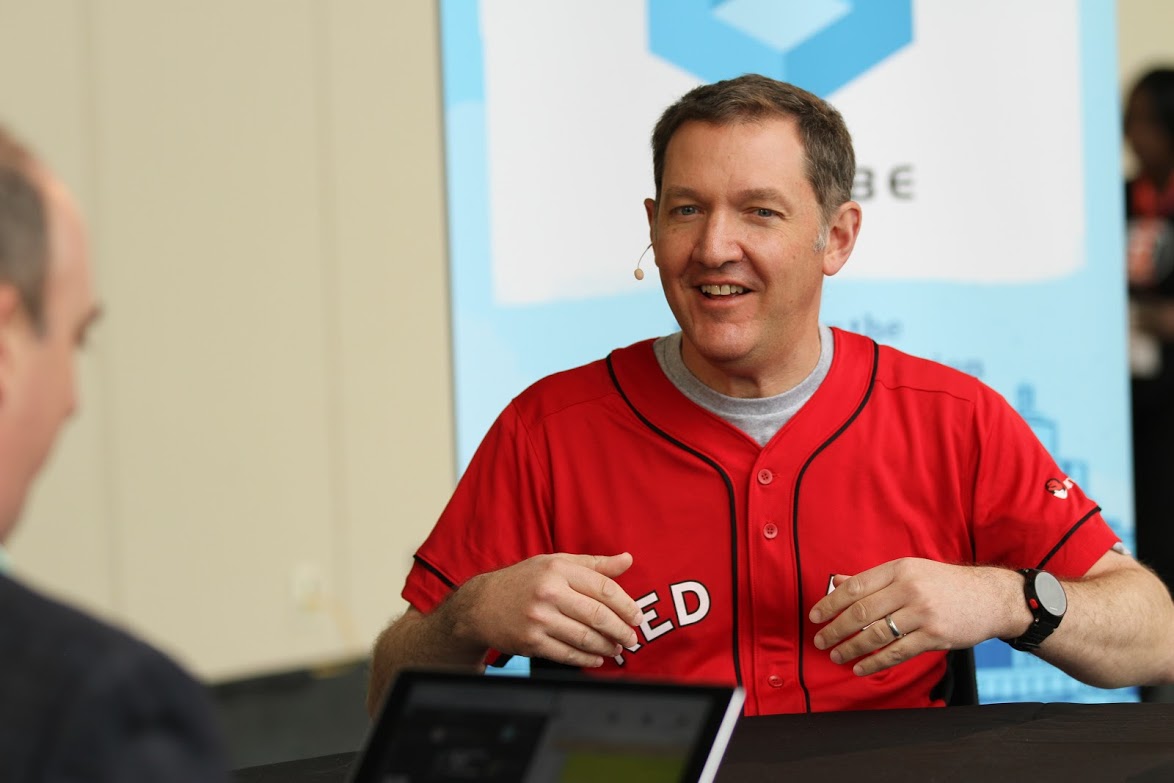 INFRA
INFRA
 INFRA
INFRA
 INFRA
INFRA
OpenStack got some play at last week’s 2017 Red Hat Summit, with keynote speakers giving the open-source infrastructure project nods. But there remains some mystery as to how much OpenStack customers are consuming from Red Hat Inc.’s offerings.
“OpenStack manages resources — whether its compute, network, storage resources,” said Jim Whitehurst (pictured), president and chief executive officer of Red Hat.
For a read on OpenStack’s health and wealth in Red Hat’s ecosystem, host Stu Miniman (@stu) and guest host John Troyer (@jtroyer), of theCUBE, SiliconANGLE Media’s mobile live streaming studio, spoke to Whitehurst during OpenStack Summit in Boston, Massachusetts. (* Disclosure below.)
This is a separate entity from what Red Hat runs up the stack, namely container services. “Our Enterprise Kubernetes product goes under the brand name OpenShift. And when we go out and sell OpenShift, it’s about managing containers, which are a component of applications, microservices,” Whitehurst said.
Once OpenShift is sold, Red Hat gives its customers a choice of what they would like to run it on — perhaps Amazon, VMware vSphere or OpenStack. “But that’s a separate conversation, and we obviously work hard to make sure it lands on OpenStack; but again, that’s a different conversation,” he said.
Amid widespread doubts about pure-play OpenStack, the technology is pulling its weight when packed into Red Hat deals, according to Whitehurst.
“In Q4, we had four deals for Red Hat total that were over $20 million. Three of those had a very substantial OpenStack component. We’ve done a number of eight-figure, standalone OpenStack deals,” he said.
Three of the four major US telecoms have eight-figure OpenStack relationships also, Whitehurst stated. And all of these OpenStack deals are poised to grow even larger in the next couple of years, in Whitehurst’s estimate.
OpenStack’s heterogeneity makes Red Hat, with its backwards and forwards knowledge of open-source technologies, an ideal broker to enterprises, Whitehurst added.
“In terms of technical support for a customer at 3 a.m., you probably want to make sure that you know exactly what’s in the bits and they’ve all been tested together,” he concluded.
Watch the complete video interview below, and be sure to check out more of SiliconANGLE’s and theCUBE’s independent editorial coverage of OpenStack Summit 2017 Boston. (* Disclosure: Red Hat Inc. sponsored this OpenStack Summit segment on SiliconANGLE Media’s theCUBE. Neither Red Hat nor other sponsors have editorial control over content on theCUBE or SiliconANGLE.)
Support our mission to keep content open and free by engaging with theCUBE community. Join theCUBE’s Alumni Trust Network, where technology leaders connect, share intelligence and create opportunities.
Founded by tech visionaries John Furrier and Dave Vellante, SiliconANGLE Media has built a dynamic ecosystem of industry-leading digital media brands that reach 15+ million elite tech professionals. Our new proprietary theCUBE AI Video Cloud is breaking ground in audience interaction, leveraging theCUBEai.com neural network to help technology companies make data-driven decisions and stay at the forefront of industry conversations.